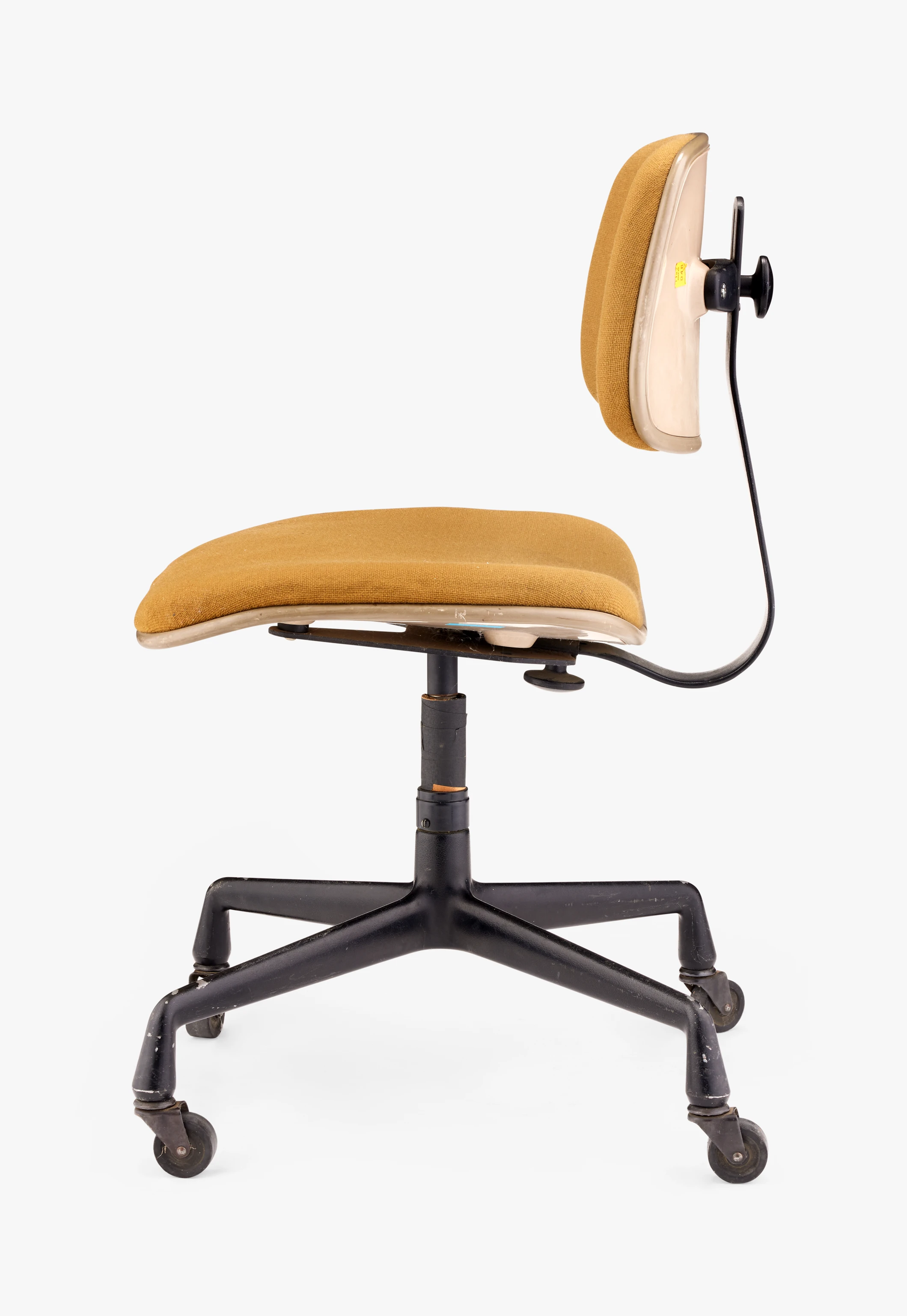
EC328 Secretarial Chair (Fabric)
The Eameses believed in using materials economically. A two-piece chair like this one exemplifies how a piece of furniture can be pared down to use less material; rather than connecting the seat and back with a continuous curve, two separate elements accomplish the same task. Museum of Modern Art curator Arthur Drexler described this as a matter of “separating functions and defining them in the narrowest possible way.” Material economy can result in savings in production costs, which ultimately may be passed on to the consumer. It also reflects a prescient awareness of sustainability and environmentalism, values that had been increasingly coming to the attention of designers and the general public since the mid-20th century. The Eameses had, in fact, been thinking along these lines since at least 1948, when their office’s entry to the Museum of Modern Art’s Low-Cost Furniture Competition included a design called the Minimum Chair. With a thin metal seat, slim backrest, and spare base, the Minimum Chair provided a seat with as little material as possible, without sacrificing comfort. More than twenty years later, the designers balanced economy with comfort in their Secretarial Chair design, while also finding other ways of achieving sustainability. By prioritizing durability in their choice of materials and production methods, they hoped the chair would have to be replaced infrequently. And when any part did inevitably show signs of wear or fail, they could be replaced individually, avoiding the need for an entirely new chair. This particular chair comes from the Eames Office at 901 Washington Boulevard. Its aluminum parts are coated in a dark epoxy.
- Artifact
- 2019.2.108
- Artists / Designers
- Charles Eames, Ray Eames
- Manufacturer
- Herman Miller, Inc. (American, founded 1923)
- Dimensions
- 33 ¼ × 25 × 25 in
- 84.5 × 63.5 × 63.5 cm
- Date
- 1971





